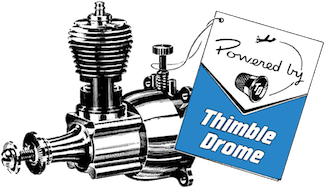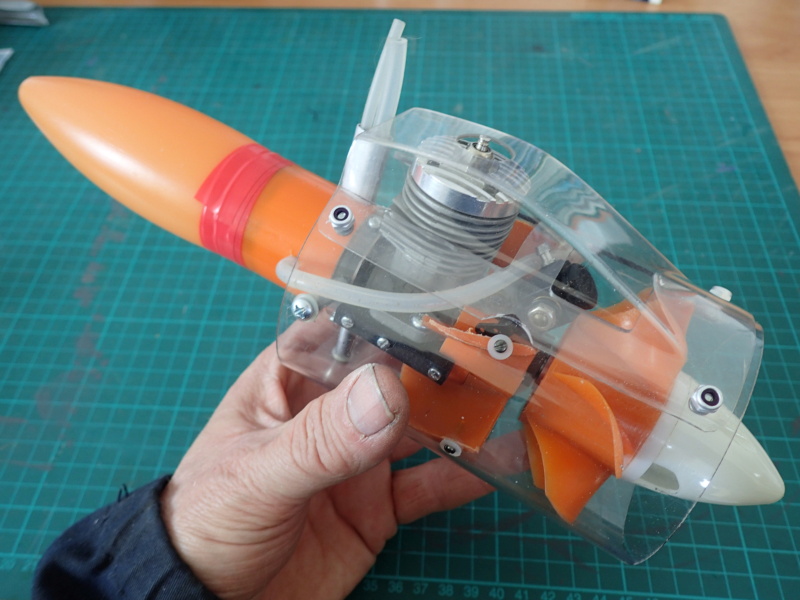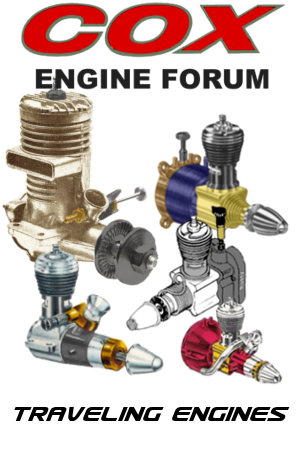Log in
Search
Latest topics
» Wen Mac .049 - Conditioning.by MauricioB Today at 11:39
» music vids.. some of your favorites
by HalfaDave Today at 11:23
» Enya .09 II Questions
by Surfer_kris Today at 10:59
» How's the weather?
by rsv1cox Today at 10:32
» Jim Walker Firebaby
by rsv1cox Today at 8:27
» Draco Goes Flying, But Misses the Eclipse
by HalfaDave Yesterday at 21:59
» A prototype Cox Reed-valve marine engine
by davidll1984 Yesterday at 21:15
» Happy 53rd birthday Mauricio!!!
by MauricioB Yesterday at 11:47
» Testers Sprite engine swap
by Greenman38633 Yesterday at 10:57
» UV Restore of Yellowed Decals
by Levent Suberk Yesterday at 8:59
» 22mm 2-blade nylon marine prop and solid-shaft drive
by roddie Yesterday at 6:46
» Post edit??
by roddie Yesterday at 5:33
Cox Engine of The Month
How the hell did the planes stay in one piece?!?
Page 1 of 1
 How the hell did the planes stay in one piece?!?
How the hell did the planes stay in one piece?!?
I was looking at some plans from 1966 for a plane and in the plans it uses a Rand LR3 actuator on a Galloping Ghost receiver setup. I’ve read about these things, but was curious how they actually worked. So I looked it up online. Seeing one work, I wonder how many early models shook themselves apart in the air when kids first started using these things….
The Mystified Mark
The Mystified Mark

batjac- Diamond Member



Posts : 2333
Join date : 2013-05-22
Age : 61
Location : Broken Arrow, OK, USA
 Re: How the hell did the planes stay in one piece?!?
Re: How the hell did the planes stay in one piece?!?
The Shakin' Mark --
I've got lots of hours on this same actuator. CA hinges had not really come into their own at the time -- actually flex hinges were available, but CA was not. We used pinned hinges because they were freely moving and not subject to fatigue breakage. At slower speeds, the planes flew with a bit of a Dutch Roll and you could see the tail wagging around. At higher speeds, it was not as evident. The transmitters were relatively simple and sent out a single tone. When the tone was being transmitted, the motor in the actuator would turn in one direction; without the tone, it spun in the other. I could actually tune my stereo receiver to the TX frequency and hear how it changed when the stick was moved. The TX could vary the frequency of the tone and also the duty cycle. The RAND actuator then mechanically would convert this variance into surface movement. Since both the rudder and elevator were in constant movement, your plane control essentially averaged out whether the rudder flopped more to the right or left.
It worked amazingly well, albeit, tough on battery time and without the precision we have today. I still have my galloping ghost actuator, transmitter and receiver. I've often thought it might be fun to try to get it back into the air again.
the old andrew
An antique flying antiques
I've got lots of hours on this same actuator. CA hinges had not really come into their own at the time -- actually flex hinges were available, but CA was not. We used pinned hinges because they were freely moving and not subject to fatigue breakage. At slower speeds, the planes flew with a bit of a Dutch Roll and you could see the tail wagging around. At higher speeds, it was not as evident. The transmitters were relatively simple and sent out a single tone. When the tone was being transmitted, the motor in the actuator would turn in one direction; without the tone, it spun in the other. I could actually tune my stereo receiver to the TX frequency and hear how it changed when the stick was moved. The TX could vary the frequency of the tone and also the duty cycle. The RAND actuator then mechanically would convert this variance into surface movement. Since both the rudder and elevator were in constant movement, your plane control essentially averaged out whether the rudder flopped more to the right or left.
It worked amazingly well, albeit, tough on battery time and without the precision we have today. I still have my galloping ghost actuator, transmitter and receiver. I've often thought it might be fun to try to get it back into the air again.
the old andrew
An antique flying antiques
 Re: How the hell did the planes stay in one piece?!?
Re: How the hell did the planes stay in one piece?!?
I didn't have the Rand motorized actuator, but regarding flapping action the Adams magnetic actuators pulsed back and forth in a similar manner. By sending the transmitter back to Ace, one could have it modified for Galloping Ghost by adding the elevator function. Elevator stick would vary the pulse rate from fast to slow, similar to the Rand. A special linkage to rudder by elevator powered by the single torque rod to rudder caused all action to happen.
I never opted for optional elevator, as I had aquired true digital servo proportional radio by then. Rudder on the Ace Pulse Commander banged back and forth, but it didn't care. It was still true proportional rudder control. It also let one know that he had both the receiver and transmitter on with it happily banging away. For that one usually opted for the least amount of friction through sewn hinges, over and under in a Figure-8 pattern. With an Adams Baby Actuator, flight pack with receiver was light enough with 2 cell 110 mA battery pack that it could power .020 powered airplanes, like the 19 inch span (483 mm) Ace Littlest Stick.
It was basically mind over matter. If you didn't care, it didn't matter.
I never opted for optional elevator, as I had aquired true digital servo proportional radio by then. Rudder on the Ace Pulse Commander banged back and forth, but it didn't care. It was still true proportional rudder control. It also let one know that he had both the receiver and transmitter on with it happily banging away. For that one usually opted for the least amount of friction through sewn hinges, over and under in a Figure-8 pattern. With an Adams Baby Actuator, flight pack with receiver was light enough with 2 cell 110 mA battery pack that it could power .020 powered airplanes, like the 19 inch span (483 mm) Ace Littlest Stick.
It was basically mind over matter. If you didn't care, it didn't matter.


GallopingGhostler- Top Poster


Posts : 5278
Join date : 2013-07-13
Age : 70
Location : Clovis NM or NFL KC Chiefs
 Similar topics
Similar topics» The pot bellied planes, the final piece of the puzzle
» Anyone here into Giant Scale R/C Planes? Post Pics of your Planes.
» Stay Sane & Carry On
» needle valve screw don't stay put!
» surestart wont stay running!
» Anyone here into Giant Scale R/C Planes? Post Pics of your Planes.
» Stay Sane & Carry On
» needle valve screw don't stay put!
» surestart wont stay running!
Page 1 of 1
Permissions in this forum:
You cannot reply to topics in this forum

 Rules
Rules







